Railfanning in North Dakota
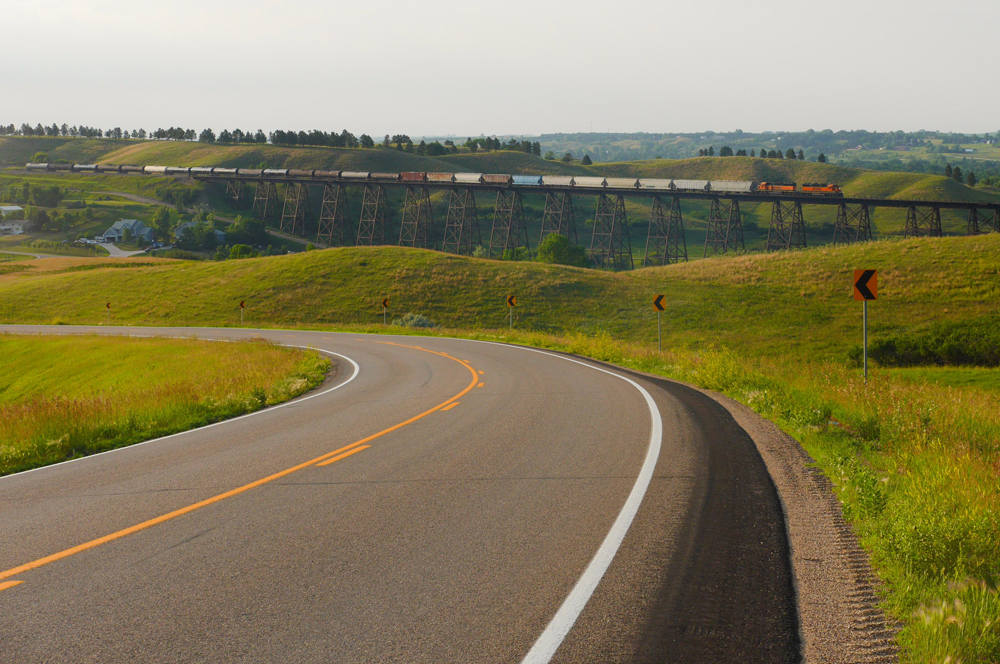
North Dakota is usually synonymous with the high plains of flat, rolling fields of wheat, corn, and soybeans, not railroad infrastructure such as bridges. One may be surprised that in a few places around the state, railroads required impressive bridges to cross wide river valleys and coulees.
These structures were constructed by BNSF Railway predecessors Great Northern Railway and Northern Pacific Railway, building their empires west towards the Pacific and the tidewater of the Puget Sound. The Great Northern built across the northern tier of North Dakota on a route called the “High Line,” while the Northern Pacific built mid-state from east to west. Each railroad had numerous branch lines that ventured into the competitor’s territory.
Many of these structures are over a century old and still provide a vital link for BNSF between East and West.
Missouri River Bridge, Bismarck-Mandan, N.D. (Northern Pacific, built 1883/1905)
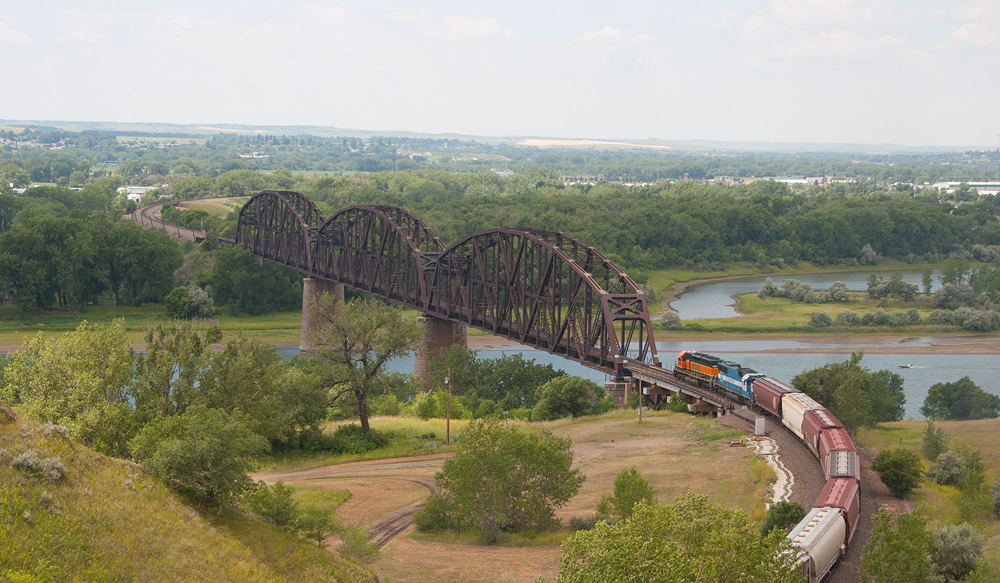
Daily train traffic: 12-15 per day
The Northern Pacific Railway built the first bridge over the Missouri River between Bismarck and Mandan in 1883, with the original spans being replaced in 1905 by those currently in use. The granite bridge piers are from the original 1883 build. At nearly 1,500 feet in length, the bridge connects the state capital with BNSF’s crew change location and yard at Mandan. The line is an essential link for grain, coal, oil, and manifest traffic.
After a lengthy process, BNSF has received final approval to replace the structure in a four-year project [see “BNSF gets final regulatory approval …,” Trains News Wire, April 2023] and has begun preliminary work. A preservation group, however, continues an effort to retain the old structure for a pedestrian and bicycle pathway [see “Fight over BNSF bridge moves to North Dakota Supreme Court,” News Wire, July 14, 2023] when the new bridge is built just upriver from the current structure.
River Road in Bismarck follows the eastern shore of the Missouri River and offers multiple waterside views. An overlook behind Bismarck State College gives an eastern view of the bridge approach; the west approach is inaccessible.
Valley City Bridge, Valley City, N.D. (Northern Pacific, built 1908)
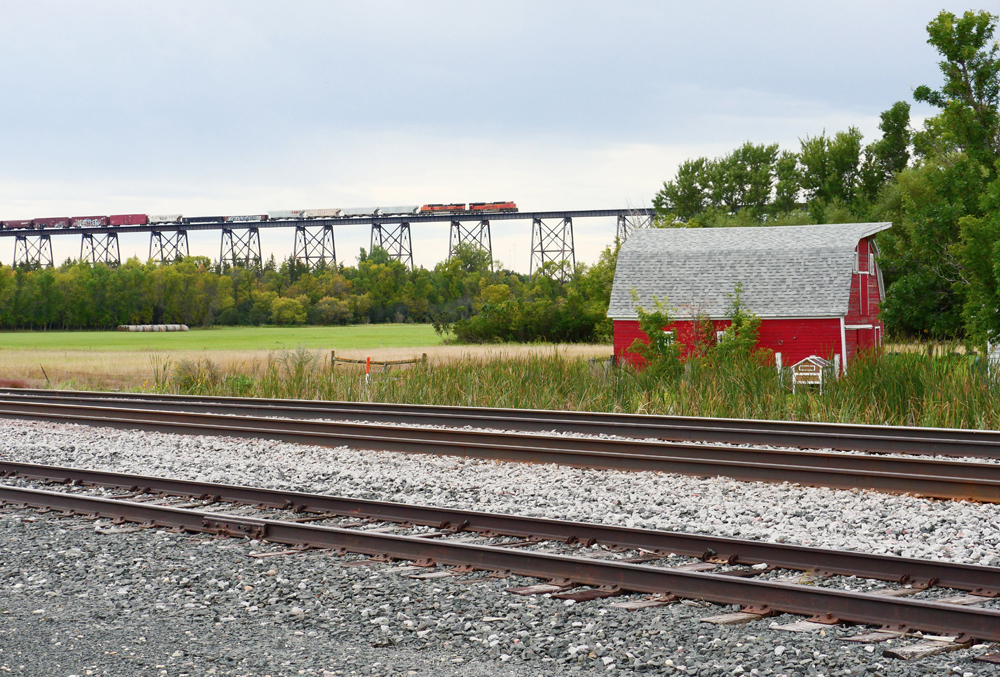
Daily train traffic: 12-15 per day
Known locally as the “High Bridge,” the Valley City trestle crosses the Sheyenne River valley and the northern part of Valley City. Just over 3,800 feet long, the single-track trestle was completed in 1908 and was designed for double track, but only a single track was constructed. Prior to construction of the bridge, Northern Pacific’s main line endured steep grades on the drop into and out of the Sheyenne Valley to serve Valley City.
At 162 feet above town, the bridge is an impressive focal point in Valley City, with the numerous railfanning opportunities existing from Chautauqua Park along the Sheyenne River and nearly under the bridge.
CPKC’s ex-Soo Line main line runs under the east side of the bridge, adding an additional railfanning opportunity.
Access to the bridge is from many areas in Valley City including Chautauqua City Park. There is no access to the bridge at track level. Valley City is just off of Interstate 94, 130 miles east of Bismarck, N.D.
Sheyenne River Bridge, Luverne, N.D. (Great Northern, built 1912)
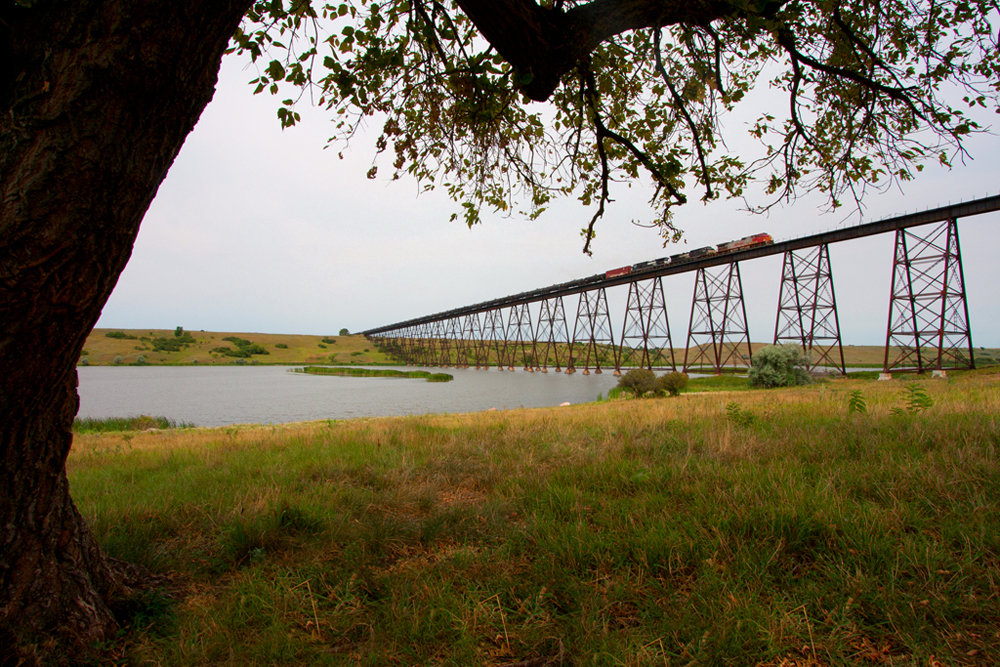
Daily train traffic: 30-40 per day
Crossing part of Lake Ashtabula and the Sheyenne River, this single-track bridge is part of the BNSF KO Subdivision and handles heavy BNSF traffic between Minot and Fargo, N.D. The deck plate girder span covers just over 2,700 feet.
This bridge is probably the most difficult to access and photograph due to its limited road access and rural and wild surroundings. The lack of photos demonstrates its off-the-beaten-path location, given its photogenic nature due to the lighting provided by its compass alignment.
Road access is off State Route 19 near the old town of Karnak to 10th Street SE. This lead to a boat launch site on the north side of the trestle. The south side of the bridge is private property.
Gassman Coulee Trestle, Minot, N.D. (Great Northern, built 1899)
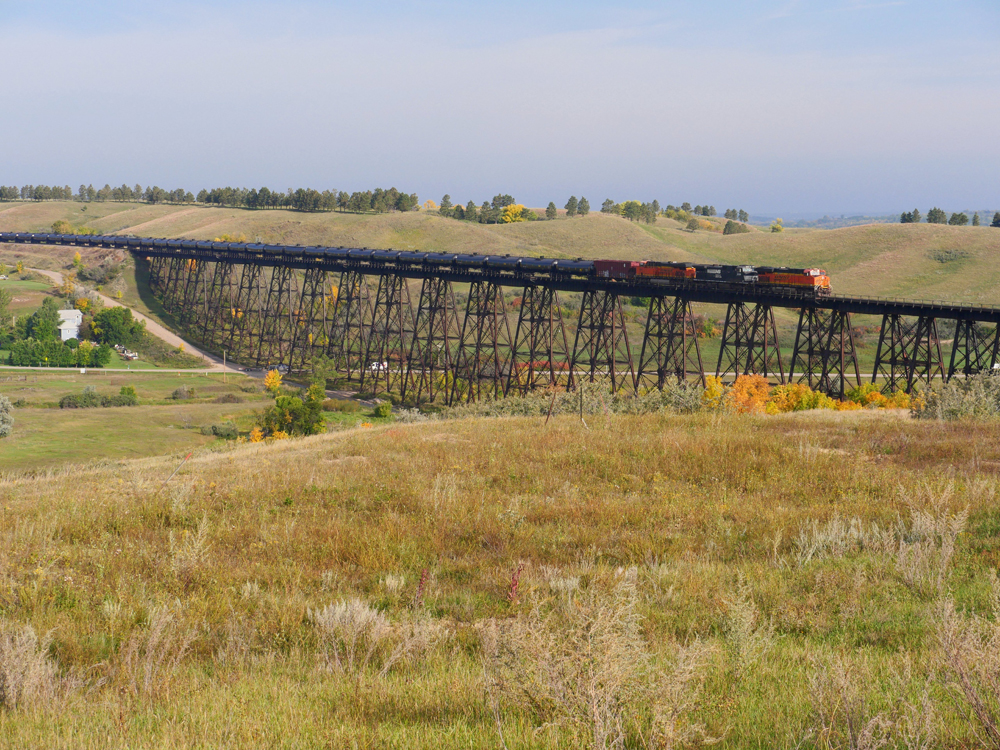
Daily train traffic: 30-40 per day
Replacing an 1887 wooden trestle destroyed by strong winds, the Gassman Coulee trestle is a single-track steel girder trestle just west of Minot. The bridge, at 1,700 feet long and just over 100 feet tall, is a favorite among visiting and local railfans, with great access and an abundance of rail traffic. The CPKC main line through North Dakota is a short distance away in the valley.
With double track on each side of the bridge, this location can act as a chokepoint for traffic and can entertain railfans for hours with a constant parade of manifest, grain, oil, and intermodal trains as well as the daily Amtrak Empire Builder.
Access to this bridge is from adjacent U.S. Highway 2 and County Road 12 W.













